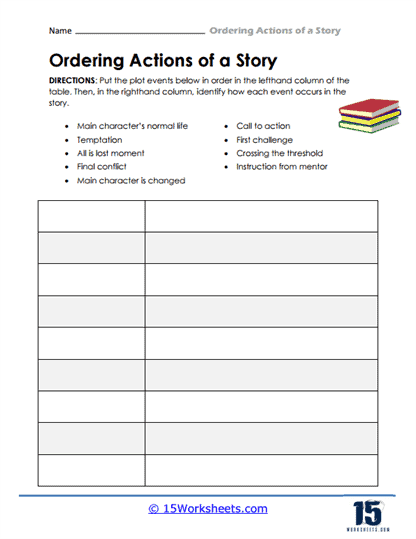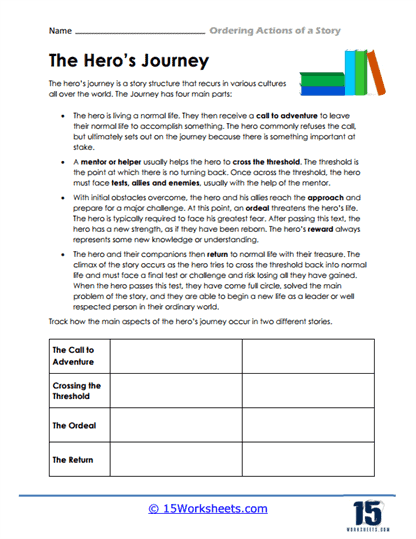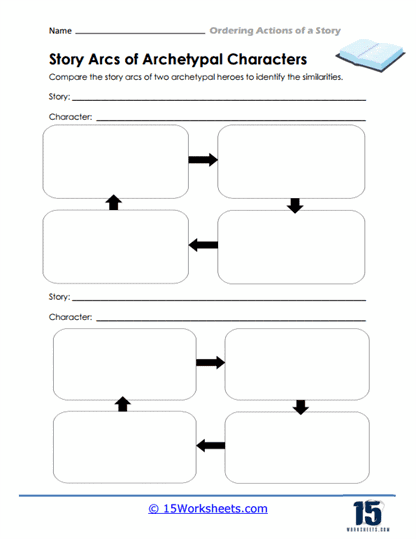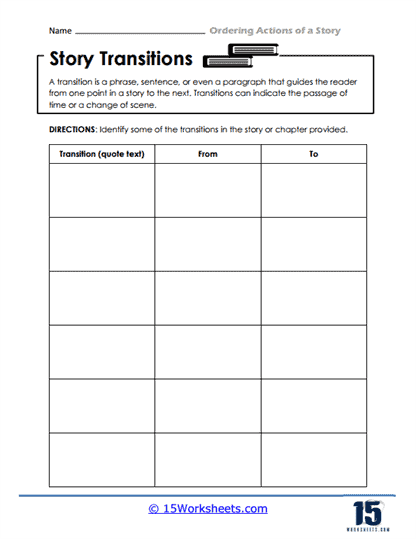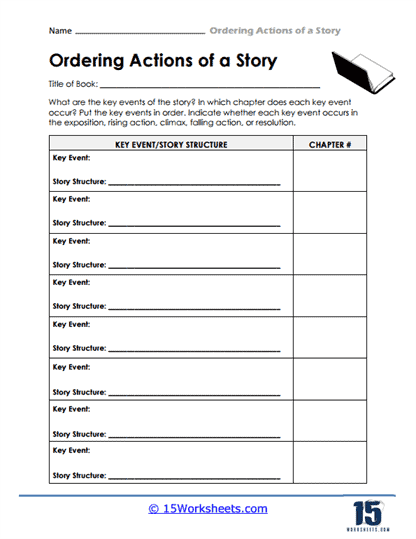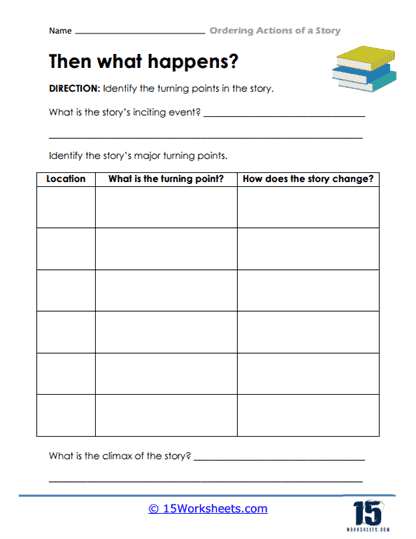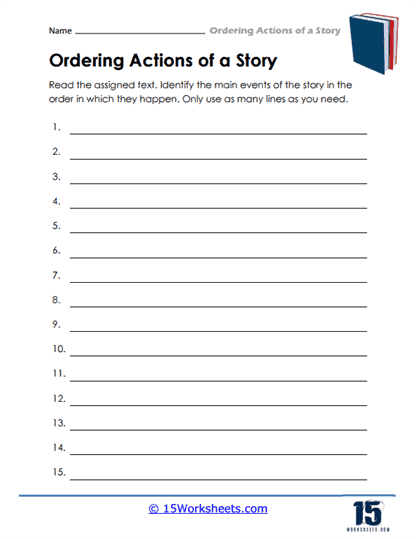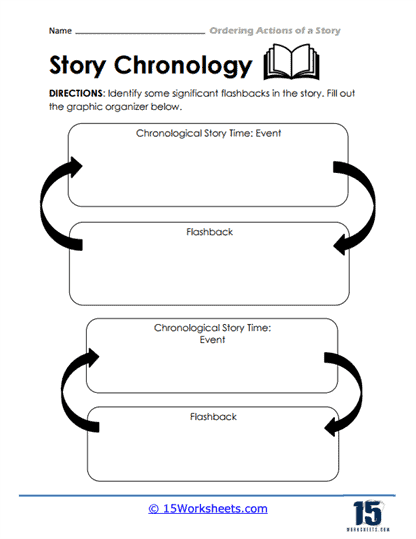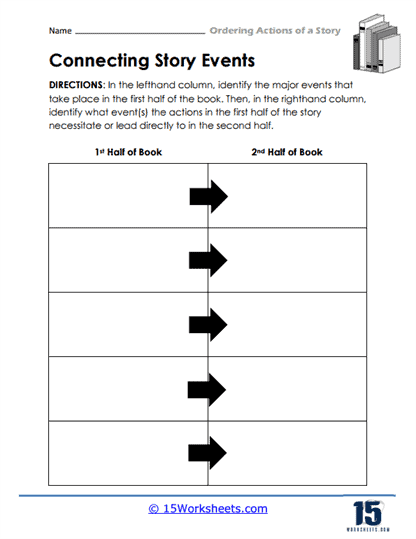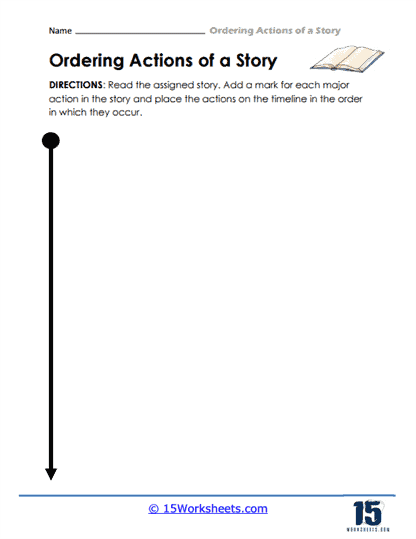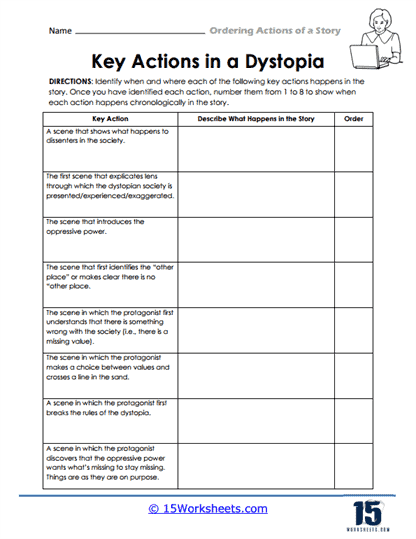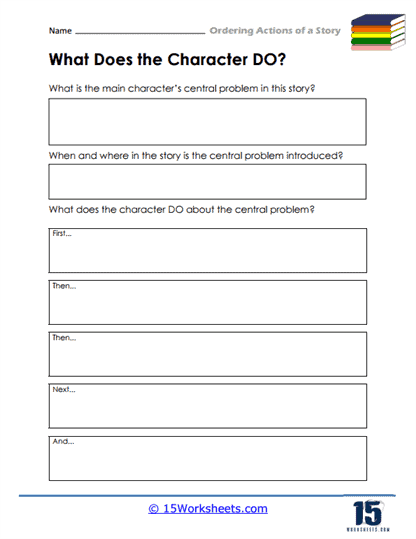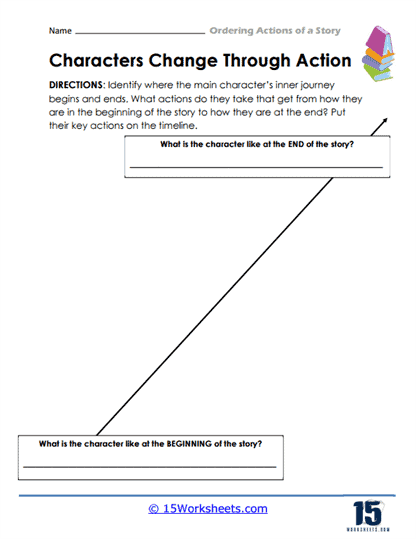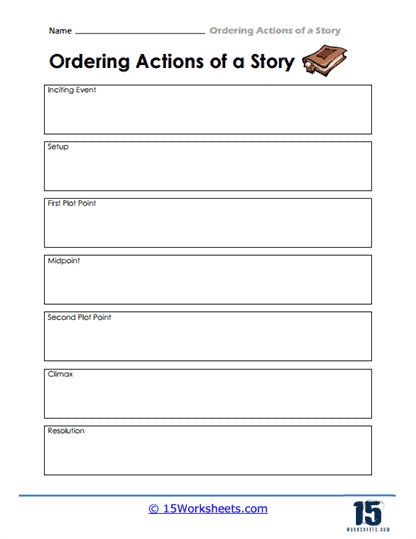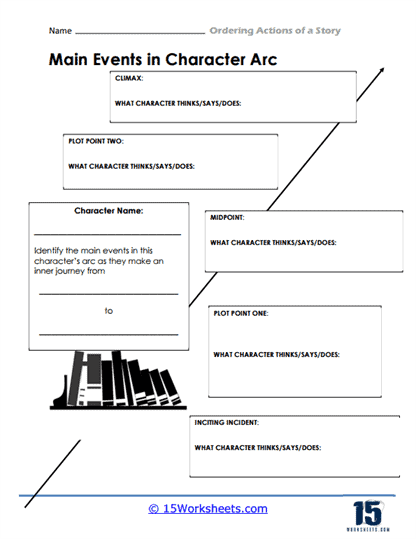Ordering Actions of a Story Worksheets
All About These 15 Worksheets
Immerse your students in the captivating world of storytelling and narrative structure with our comprehensive collection of 15 dynamic worksheets focused on “Ordering Actions of a Story.” Designed to enhance reading comprehension and analytical skills, this collection is tailored for students to explore and master the art of sequencing events within a narrative.
The primary goal of this collection is to empower students with the ability to identify, organize, and comprehend the sequential flow of actions within a story. Through a series of thoughtfully designed worksheets, students will:
- Develop Sequencing Skills – Students will learn to recognize the logical order of events within a story, improving their overall understanding of narrative structure.
- Enhance Reading Comprehension – By closely analyzing the sequence of actions, students will deepen their comprehension of characters’ motivations, plot developments, and story arcs.
- Strengthen Analytical Thinking – Engaging with the worksheets will encourage students to think critically about cause-and-effect relationships between story events.
- Expand Vocabulary – Exposure to diverse narratives will introduce students to new words and phrases, enriching their language skills and vocabulary.
The collection encompasses a diverse array of engaging activities that cater to various learning styles and reading levels. Each worksheet features a unique story or excerpt, followed by a series of tasks aimed at honing students’ sequencing abilities and comprehension.
- Story Mapping: Students will visualize the flow of events by mapping them onto a timeline or a flowchart, aiding in the development of their organizational skills.
- Sequencing Sentences: Students will construct sentences describing story actions, reinforcing their understanding of chronological order.
- Character Analysis: Engaging not only with the events but also the characters involved, students will deduce why particular actions transpire and their impact on the narrative.
- Discussion Prompts: Thought-provoking questions will encourage classroom discussions, allowing students to delve deeper into the motives behind each action.
- Comparative Sequencing: By comparing the order of actions in different stories, students will identify patterns across narratives, refining their analytical skills.
What are the parts of a story plot?
A story plot is the sequence of events that make up the narrative of a work of fiction. It’s the framework that gives structure and direction to the story. A traditional plot is often divided into several key parts:
- Exposition: This is the beginning of the story where the characters, setting, and initial situation are introduced. The reader gets to know the background information necessary to understand the story’s context.
- Inciting Incident: This is the event that sets the main plot in motion. It disrupts the normalcy of the protagonist’s life and introduces the central conflict. It’s the incident that propels the protagonist into action.
- Rising Action: In this phase, the story’s tension and conflict escalate. The protagonist encounters challenges, obstacles, and conflicts that test their abilities and determination. This section builds towards the story’s climax.
- Climax: The climax is the story’s turning point and its most intense moment. It’s the point of highest tension where the protagonist faces the central conflict head-on. The outcome of the conflict becomes apparent during or immediately after the climax.
- Falling Action: After the climax, the story begins to wind down. Loose ends are tied up, and the consequences of the climax are dealt with. The story’s conflicts start to resolve.
- Resolution: Also known as the denouement, this is the conclusion of the story. The final questions are answered, and the remaining conflicts are resolved. The characters’ fates and the overall outcome of the story become clear.
- Conclusion: This is the very end of the story, where any remaining details are wrapped up. It might include a glimpse into the characters’ futures or a final reflection on the events that transpired.
It’s important to note that not all stories follow this exact structure, and variations can arise based on the genre, style, and intended impact of the story. Some stories might have subplots that follow their own mini-plot structures, contributing to the overall narrative complexity. Additionally, some stories might employ non-linear structures, where events are presented out of chronological order, challenging the conventional progression of plot elements.
Overall, understanding the parts of a story plot is essential for both writers and readers, as it provides a framework for crafting engaging narratives and for comprehending the dynamics of storytelling.

